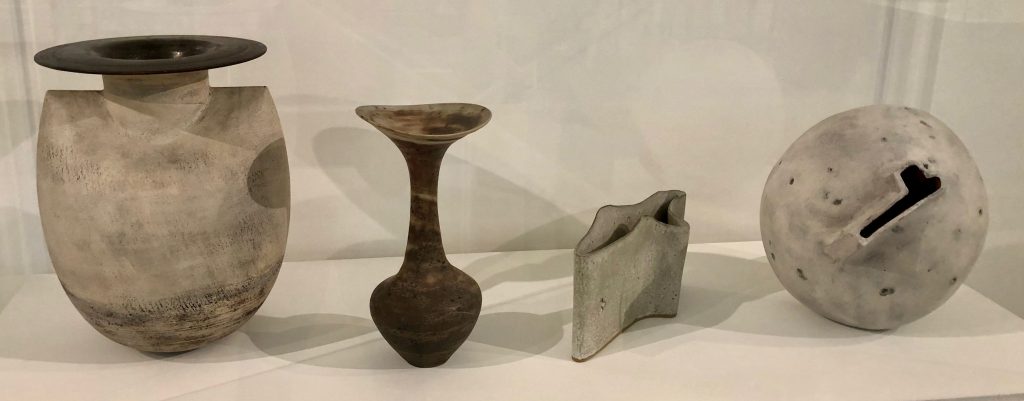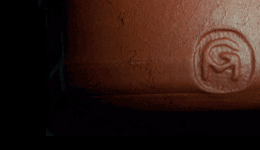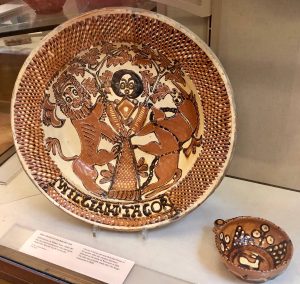
Now that museums don’t stop you from taking photos any more (without flash) my habit of trying to record inspirational pots is out of control! My friend Julia and I enjoyed lunch in the gift shop café at the Fitzwilliam Museum and then she followed me around the Ceramics rooms while I drooled over the collection.
I’ve sneaked photos of some of these pots before but this time I found staff were actively involved in describing their favourites and encouraging me to take photos with my iPhone.
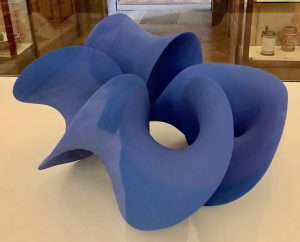
As far as possible I’ve added the name of the artist. You’ll see that I’m inspired by ancient Chinese forms, English goopy slip-trailed Toft platters, 1930s Art Deco factory ware, anything resembling a bird and the collection of work by twentieth century English studio potters, all interspersed with selected contemporary pieces.
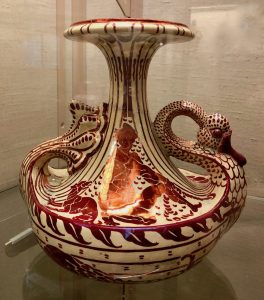
Enjoy browsing through the Fitzwilliam’s ware. Beyond these they have walls of Iznik pots and much more. The museum is free and well worth the visit if you’re ever a tourist in Cambridge.
Swan Vase Crane, Walter; designer; British artist, 1845-1915
Maw & Co.; factory
earthenware; lustreware; Art Pottery 1889 — 1901 Arts and Crafts (movement); Art Nouveau Late 19th Century; Victorian
Description:
Earthenware vase, decorated in ruby lustre on a cream ground. The low-swelling body is shaped as a galley; its prow rises up as the arched head of a swan, while the stern curves over in the form of a fish tail. The sides of the galley are decorated on one side with two swimming dolphins, and on the other with a mermaid and an anchor. On the upper body of the vase are the painted figures of two sailors, one on each side, one rowing, the other accompanied by a dog and pulling up an anchor chain. The body rises into a tall, concave neck, which opens to a broad, everted rim; neck and rim are painted with vertical stripes and the inside of the neck is red lustre. The prow and stern of the galley rest on either side of the neck, forming handles. The underside is flat and fully decorated, with four wavy circles around Crane’s large monogram, crossed by three straight lines which curve up to the prow and stern. The vase is heavy for its size.
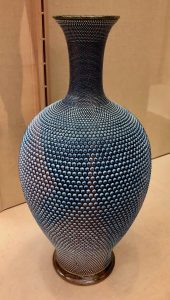
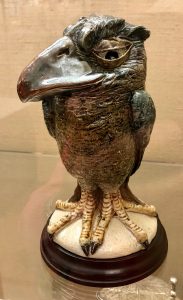
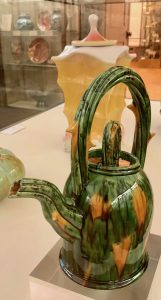
Julia and I took a slow train back to London and went our separate ways. We met in Montreal fifty years ago and have met in London for a meal and gallery hop several times over the years. I love the fact that you can resume conversation with friends as if you lived in the same city and met up regularly.
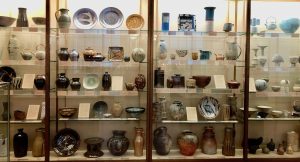
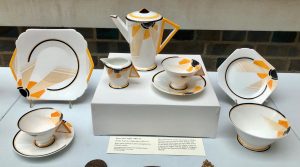
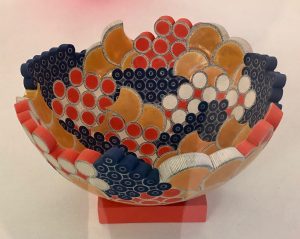
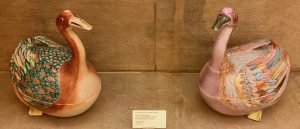
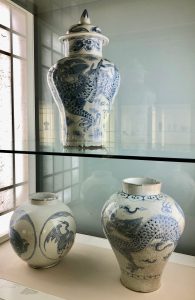
Over the next couple of days in London my English relatives took me to Kew Gardens and I visited the Contemporary Ceramics Centre and the V & A. I’d like to try to post an edited selection of images from those adventures over the next few days. But yesterday and today I have happily found myself covered in stoneware clay slip as I begin to make a group of pots for the next soda firing later in November. So I shall blog when I take a break from throwing and assembling pots.
